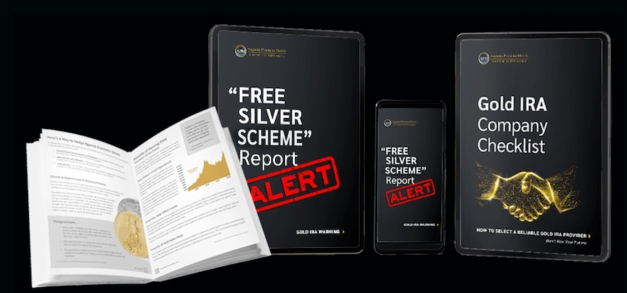A precious metals IRA rollover is a strategic way to diversify your retirement portfolio by investing in physical gold, silver, platinum, or palladium. This method allows investors to protect their savings from inflation and economic uncertainty while complying with IRS regulations. In this guide, we’ll outline the key steps, requirements, and best practices to help you successfully complete a precious metals IRA rollover.
What Is a Precious Metals IRA Rollover?
A precious metals IRA rollover involves transferring funds from an existing retirement account — such as a 401(k), 403(b), or traditional IRA — into a self-directed IRA that holds physical metals. Unlike traditional IRAs that focus on stocks, bonds, or mutual funds, a precious metals IRA allows investors to hold tangible assets like gold, silver, platinum, or palladium.
The primary advantage of this approach is stability. Precious metals have historically maintained value during economic downturns, making them a popular hedge against inflation and financial instability.

IRS Rules and Regulations for Precious Metals IRAs
The IRS imposes strict guidelines on precious metals held in IRAs. Only certain types of metals qualify, including:
- Gold: Minimum purity of 99.5% (e.g., American Gold Eagle, Canadian Gold Maple Leaf)
- Silver: Minimum purity of 99.9% (e.g., American Silver Eagle)
- Platinum and Palladium: Minimum purity of 99.95%
Storage Requirements
One of the most critical rules is that IRA-held precious metals must be stored in an IRS-approved depository. You cannot store the metals at home or in a personal safe. These approved depositories offer high-level security, insurance, and regulatory oversight to ensure the safety of your investments.
Prohibited Transactions
The IRS prohibits certain transactions within a precious metals IRA:
- You cannot personally purchase metals and deposit them into the IRA
- Taking personal possession of IRA-held metals, even temporarily, can result in penalties
- Using IRA metals as collateral for a loan is not allowed
- Transferring metals to disqualified persons (e.g., family members) is prohibited
Contribution Limits
For 2025, the contribution limits for precious metals IRAs are:
Rollovers and Transfers
You can fund a precious metals IRA through rollovers from existing retirement accounts like 401(k)s or traditional IRAs. There’s no annual limit on rollovers, but it’s important to follow IRS guidelines to avoid penalties
Tax Implications
The tax treatment of your precious metals IRA depends on whether it’s structured as a traditional or Roth IRA:
- Traditional IRA: Contributions may be tax-deductible, but withdrawals in retirement are taxed as ordinary income
- Roth IRA: Contributions are made with after-tax dollars, but qualified withdrawals in retirement are tax-free
Precious Metals IRA Rollover Guide
Ok, so here’s a general simplified breakdown of the steps required during a precious metals IRA rollover. It is highly recommended to contact a reputable precious metals IRA provider to walk you through the process and the paperwork.
Step 1: Research and Choose a Gold IRA Company
Select a reputable company with experience in precious metals IRAs to guide you through the process. look for companies with solid reputations, verified customer reviews, and accreditations from organizations like the Better Business Bureau (BBB) or Business Consumer Alliance (BCA). Confirm that the dealer provides proper documentation, such as certificates of authenticity, for each purchase.
Step 2: Open a Self-Directed IRA
Establish a self-directed IRA through an IRS-approved custodian that allows precious metals investments.
Step 3: Initiate the Rollover Process
Once you’ve selected a custodian, the next step is to fund your new self-directed IRA. This can be done through either a rollover or a transfer.
A rollover involves moving funds directly from your previous retirement account into your self-directed IRA.
For a direct rollover: Funds move directly from your existing retirement account to the new Gold IRA.
For an indirect rollover: Funds are distributed to you, and you must deposit them into the Gold IRA within 60 days.
A transfer occurs when your existing IRA provider directly transfers funds to your new self-directed IRA custodian. Since this process avoids direct handling of funds, it eliminates the risk of IRS penalties.
Step 4: Purchase IRS-Approved Precious Metals
When selecting metals, ensure they meet IRS purity standards. Approved options include:
- Gold: American Gold Eagle, Canadian Gold Maple Leaf, Australian Gold Kangaroo
- Silver: American Silver Eagle, Canadian Silver Maple Leaf
- Platinum and Palladium: Various approved coins and bullion with 99.95% purity
Your metals must be sent directly to an IRS-approved depository to maintain compliance with tax regulations.
Step 5: Secure Storage for Your Precious Metals
IRS rules require that IRA-owned metals be stored in an approved depository. These facilities provide high-security storage, insurance protection, and regular audits to ensure your assets are safe.
Reputable depositories include facilities such as Delaware Depository and Brink’s Global Services. Be sure to confirm that your chosen custodian works with secure, IRS-compliant storage providers.
Step 6: Manage and Monitor Your Precious Metals IRA
Once your precious metals are secured, it’s important to monitor their performance. Track gold and silver market trends, and stay informed about factors that may impact metal prices.
Diversifying your IRA with other asset types, such as stocks or bonds, can further balance your portfolio. Regularly review your investment strategy to ensure it aligns with your retirement goals.
Why Consider a Precious Metals IRA Rollover?
Diversifying your retirement portfolio with precious metals offers several benefits. Precious metals are known to retain their value during market volatility, providing a safeguard when traditional investments decline. Gold and silver, in particular, have a long history of performing well during economic uncertainty.
Precious metals also act as a hedge against inflation. As the purchasing power of paper currency decreases, the value of gold and silver often rises. This stability can protect your retirement savings from inflationary pressures.
Additionally, adding physical metals to your IRA introduces a non-correlated asset to your portfolio, reducing overall investment risk.
FAQ
1. What is the difference between a transfer and a rollover?
A transfer moves funds directly between your existing IRA provider and your new self-directed IRA custodian without you handling the money. A rollover requires you to withdraw funds from your original IRA and deposit them into your new self-directed IRA within 60 days to avoid tax penalties.
2. What types of precious metals are allowed in a self-directed IRA?
The IRS allows gold, silver, platinum, and palladium that meet specific purity standards. Approved options include American Gold Eagles, Canadian Gold Maple Leafs, and other IRS-compliant bullion products.
3. Can I store my IRA precious metals at home?
No. The IRS requires IRA-owned precious metals to be stored in an approved depository. Storing these metals at home may result in your IRA losing its tax-advantaged status.
4. Are there tax penalties for rolling over my IRA into precious metals?
As long as the rollover process is completed correctly — either through a direct transfer or within the IRS’s 60-day window — there should be no tax penalties.
5. What are the storage costs for a precious metals IRA?
Depository fees vary depending on the provider and the value of your holdings. Typical costs include an annual storage fee and insurance for your metals.
6.How do I withdraw from a precious metals IRA?
You can either sell your metals through your custodian and receive cash or take physical possession of the metals as a distribution (subject to taxes and potential penalties).
8. How long does the rollover process take?
The timeline varies depending on your custodian and previous IRA provider. On average, the process can take between 2 to 4 weeks.
